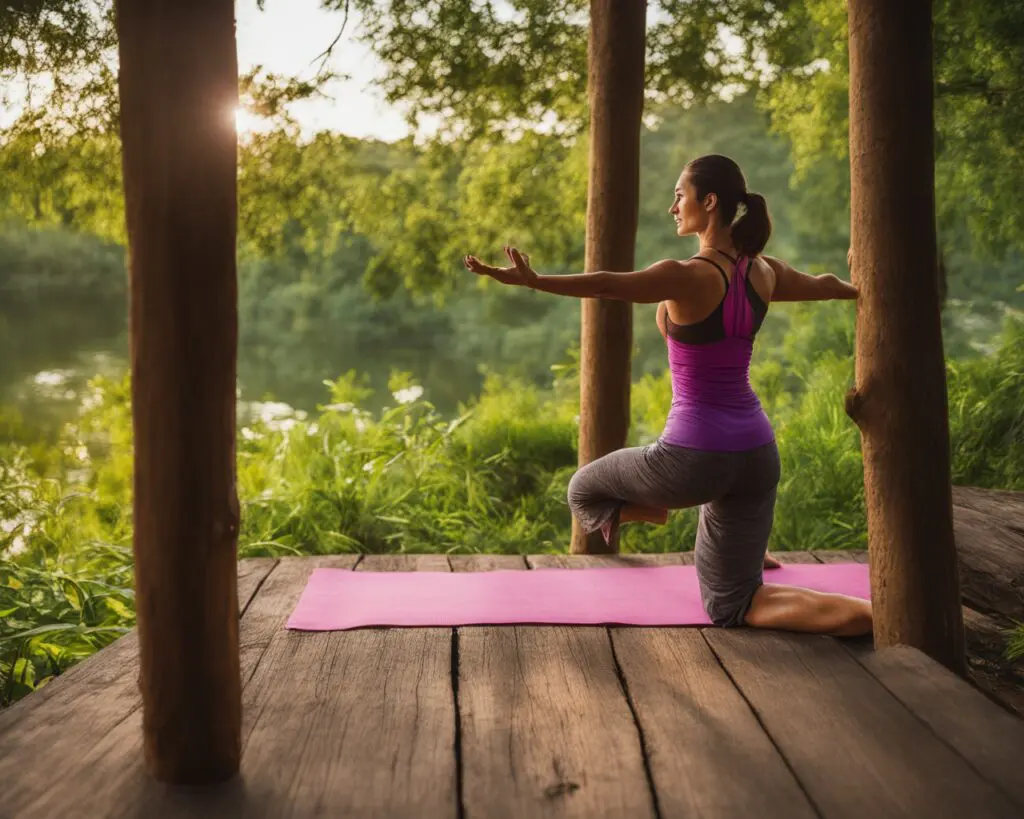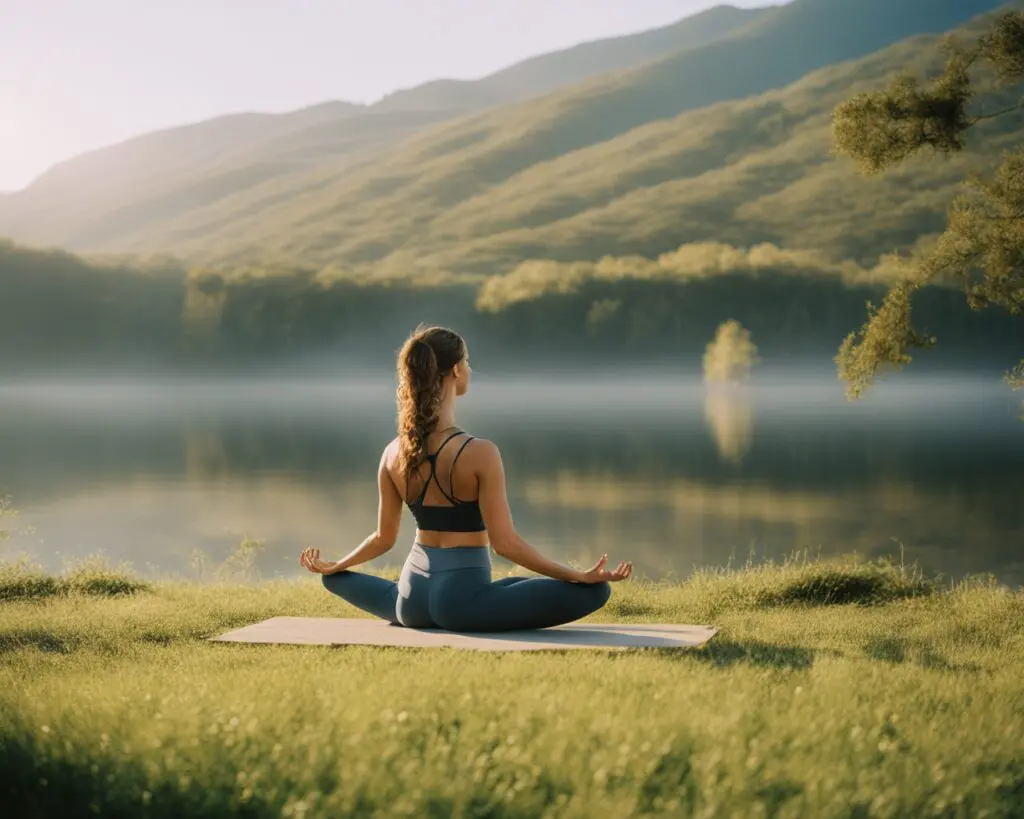Exercise and Fitness
Embrace Ayurvedic Exercise and Fitness for a Holistic Lifestyle
By Dennis Bluthardt at Namaste Studios
Ayurveda, an ancient wellness system, came to us from India with the radical notion that we ought to be in balance and harmony, in all things and always. Radical, right?
This is an entirely holistic approach to being healthy. “Healthy” can be defined in many ways, but to an ayurvedic doctor (a vaidya), health is way more than the absence of disease. Your head should be clear, not foggy. Those spare parts around your waist are junk in the trunk of someone practicing Ayurveda. The idea is to heal from physical diseases, but we should also be clear of mind (and spirit) and free of the terrible burdens of emotional “disease” as we can become.
That’s a different approach from Western medicine’s allopathic view.
Ayurveda posits that each of us is a unique jumble of parts, pieces, and DNA, and upon close examination, our vaidya can explain why we are the way we are. But after learning about our individual ” constitution,” what Ayurveda calls our dosha, you may take on the task of always keeping your body in good working order. Ayurveda believes in personal responsibility and self-knowledge; without this, you can’t know (or help care for) yourself.
Keeping that in mind, here’s a wellness hack: You don’t need a vaidya to figure out who you are! Just consult Google, the object of all human knowledge.
But even then, Sanskrit is complicated and confusing, so take a careful look. After discovering your dosha type, your fitness type is now open to you.
Many people are shocked when they hear what Ayurveda has to say. Have you tried everything? Have you drunk the one-size-fits-all Kool-Aid®? Are things just not working for you?
Ayurveda postulates that your individual, “situationally dynamic” interpretation of the diet, health strategies, and details of what you will find to be healthful can be found in your constitutional type. What emerges is a totally unique path to wellness for your wellness!
You aren’t here to be the same as everyone else. When you find your dosha and find that Ayurveda is not cramming you into a one-size-fits-all system, it gets it.
It isn’t easy to remember following Ayurveda’s primary injunction.
Let’s have a nice, green, protein-rich smoothie and remind ourselves
to forget.

The Role of Exercise in Ayurveda
Physical activity is, of course, an all-important part of the daily routine in an Ayurvedic lifestyle. Our whole body is connected, and physical activity also has its place in the mind-body-spirit. It’s just good science! Everyone needs to get their blood moving to balance their doshas. Physical activity improves circulation, helps us digest things, and boosts critical thinking.
Whether you’re more academic or spiritual, you will find that yoga is an excellent practice. It strengthens the body and improves balance. Many styles are available, so you can shop for your yoga style to fit your doshic needs. Try a few intro classes at your local studio to get on the right path to yoga.
In the teachings of Ayurveda, a spiritual practice is the key to finding yourself on the right side of things. Take your time and reflect on who you might be. Ask yourself: how might you be fueled? How might you make yourself clear? How will you find your way? Do your best to be here in the present moment. Let go of all the distractions!

Yoga as an Ayurvedic Exercise
Yoga and Ayurveda, two ancient Indian practices, go together incredibly well. Both aim to support comprehensive, holistic well-being but do so in different ways: Ayurveda is primarily focused on balancing doshas or energies in the body to achieve optimal health, while yoga is mainly a physical, breath, and meditative practice, aiming to support both clarity of mind and bodily strength.
Different styles or a blend of styles work better for different doshas (for doshas, read: body types, other collections of strengths, weaknesses, and proclivities). For example, if you are looking for balance, equanimity, stability, or to wind down, then the ideal style(s) may be a Hatha or foundational style of yoga (Hatha refers to a slower style that holds poses, focuses on alignment and the like, and does not flow fast, Vinyasa style).
Meanwhile, the potential benefits of yoga overall are relatively extensive. Physically, yoga likely helps improve posture, core, upper body, etc., flexibility, physical strength, and posture! While also aiding digestion and circulation (it helps improve blood flow to certain areas of the body while reducing it in others during the actual practice, with potential benefits in this way persisting for a while afterward).

Incorporating Meditation into Your Fitness Routine
Meditation has deep roots in Ayurveda, the ancient Indian system of medicine, where it was practiced to create mental clarity and emotional balance. Just as traffic makes it difficult to reach a destination, stress makes it difficult to achieve balance in the body. Regular meditation makes it easier to harmonize the doshas (vata, pitta, and kapha) and enjoy good health. The extra benefits of improved concentration, increased creativity, and a deep sense of tranquility are worth their weight in gold, as these are the most valuable mindsets and feelings one can possess in these super busy times.

Creating a Personalized Ayurvedic Fitness Plan
We all have a unique body type, or dosha, that can help us determine the best exercise for staying balanced. Ayurveda has three types of doshas: Vata, Pitta, and Kapha. A specific physical body type and emotional behaviors characterize each dosha. Everything from the size of your body to the speed of your metabolism and whether you are quick-tempered or easygoing provides insights about your dominant dosha. Most of us can guess our dosha accurately, but there are many quizzes online that you can take to be sure, or you can schedule a consultation with an Ayurvedic practitioner.
The premise is the same for creating a fitness plan for each dosha. Hear me out. Vata types often suffer from anxiety, so grounding exercises such as tai chi, qigong, body flow, and yin yoga are good choices for indoor activities. If you are a Pitta, you naturally have a “go get them” attitude that loves challenging everything. Pitta types are your avid runners, weightlifters, or fans of Soul Cycle classes. This is excellent news for Kaphas because Kaphas needs the boost to get moving.
So, how do we stay balanced? Lots of people are doing yoga, but is it right for you? The answer is “yes,” but you should be doing the “right” kind of yoga. For instance, Pilates is an excellent addition to your studio workouts because it focuses on deep core strength and flexibility while strengthening your muscles in a balanced way. Here are the best types of Pilates (for you): Vata types must stay grounded. A hatha or restorative yoga practice will keep them still, with the added benefit of increased blood flow and relaxing stretches.

The Benefits of an Ayurvedic Fitness Lifestyle
An Ayurvedic approach to exercise and fitness is holistic, encompassing a physical, mental, and emotional perspective.
Physically, Ayurveda-based practices urge people to “exercise for their dosha,” or unique body constitution. This specified, individualized exercise method ensures that physical activity aligns with your dosha’s inherent qualities. This way of moving will support rather than imbalance your dosha. Such a personalized approach makes physical exercise less demanding, stressful, effective, and physically healthy. This same approach increases Bala (appetite for life, i.e., general energy), physical strength, better tissue nutrition, and better physical performance.
Mentally, many Ayurveda-based practices also teach you how to “be here now” when working out, it shows you how to be very self-reflective and gentle with your body while still pushing your body (i.e., mind/body awareness [pranayama during exertive physical activity], 10-minute mindfulness, and rest phases throughout the day, breaks during exercise). These mentally balancing aspects of Ayurveda increase concentration and a better satiation of Vata-deranged mental states, like mental anxiety, hyperactivity, hypersensitivity, and inability to relax. These mental “skills” could make you more attuned to your body in a way that could help you modify your exercise to be both dosha-supportive and more mental-health-friendly.
Emotionally, exercise has the potential to open and balance emotions by way of balancing nadi-based (the channels of correspondence between the heart and emotions) energy (multilevel emotional exercises like yoga, qigong, worship, and devotional practices). More straightforward techniques like pranayama (nadi shadchanim, or alternate nostril breath) cleanse the nadi energy centers and circuits, balance many chakras (heart) circuits, and make for improved “internal communication” and emotional balance. With daily practice, this “work” can be transformational. Isn’t Ayurveda a great perspective from which to see working out an exciting, better alternative?

Understanding Ayurveda and Its Principles
Ayurveda is an ancient system of medicine that emphasizes achieving health by balancing the body, mind, and spirit. Everything living on this planet combines five elements: earth, water, fire, air, and ether, combined to form the doshas, Vata, Pitta, and Kapha. We all have our unique constitution (or Prakriti) determined by the predominance of doshas present at conception and birth, which continue to influence our physical and mental characteristics throughout our lives. As the doshas play a crucial role in our health, we must understand our dosha to maintain well-being and prevent disease.
The most potent aspect of Ayurveda is its approach. Instead of proposing a one-size-fits-all diet, Ayurveda focuses on infrequently addressing our lifestyle and mental health information. Instead of letting your health only be treated by a doctor, it allows you to integrate a more well-rounded approach into your life, all the time.
- Your doctor will heal your symptoms and pain while knowing little about your life.
- Ayurveda will help you understand a theoretical framework that allows you to understand yourself.
The article took a broad look at some of the basic tenets of Ayurveda and how they relate to exercise and fitness. The key point is that understanding whether you are a vata, pitta, or kapha dosha can impact the type of exercise you should do. You can gear your workouts to fit some of these Ayurvedic principles to achieve that higher goal of overall health and wellness.
By “fitness,” Ayurveda doesn’t just mean getting six-pack abs. Ayurvedic “fitness” speaks more to the mind and the body and encourages a healthy outlook on general body image.
It is a fascinating field to explore on your own time to keep you occupied during the pandemic. Your research may give you some ideas for an Ayurvedic home workout.
What type of dosha are you? Have you experimented with these principles in the past? Were you successful?
To learn more, visit Ayurveda at Namaste Studios to book an Ayurveda session. Additionally, you can find more of our Ayurveda Blogs here.
For a Limited Time: Get your NEW MOON JOURNAL for a massive discount at Amazon here!
Bonus for blog readers: Watch how this Hybrid AI chatbot can save thousands of hours interacting with your clients. Click here for a FREE WEBINAR – It’s AMAZING!





